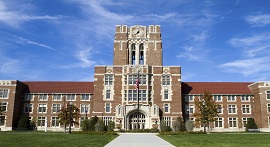Physical Therapist
A Day in the Life of a Physical Therapist
Working with patients who have limited use of their own bodies due to injury or disability, a physical therapist builds flexibility, strength, and spirit. Her goals are to reduce the patients’ pain, to increase their range of motion, and to give them back their sense of self-determination. “All day I help people get back in charge of their lives,” wrote one physical therapist from Tucson, Arizona, “and that makes me feel great!” This sense of contributing to peoples’ quality of life is important to those entering the field. Physical therapy is emotionally and physically demanding, and a patient’s progress has to be measured in extremely small increments. Still, those who find it rewarding are extremely happy with their choice of occupation. A physical therapist works in either a hospital or private office setting, seeing roughly ten patients per day. Some physical therapists have specialties that require additional certification, such as gerontology, sports physical therapy, ob/gyn, pediatrics, orthopedics, neurology, or degenerative diseases like multiple sclerosis or cerebral palsy. Most are generalists and must be able to evaluate a patient’s condition and design a reasonable rehabilitation program. Often, physical therapists see patients after traumatic injuries sustained in car crashes, sports mishaps, or other types of accidents. In these cases, physical therapists work closely with physicians to determine the pace and expected progress of the patient. A physical therapist has to be sensitive not only to the physical limitations of his patients but to their emotional limitations as well. “You have to be able to motivate people to do exercises that hurt and remind them of their limitations,” wrote one physical therapist, “and the last part is the most difficult part for them.” “Patience is key,” as another put it. The emotional strain of working with people who are frustrated at their newly limited abilities can take its toll. “When a patient’s body isn’t responding, they can take it out on you,” mentioned one. Emotional attachment to patients is nearly inevitable after months or even years of close association, and being the target of people’s anger and frustration can be a drag; of the ten percent who leave physical therapy each year, more than half cite “depression” as one factor. The profession is physically demanding, too; most of a physical therapist’s time is spent standing, crouching, bending, and using her muscles, and long days followed by sore evenings are common. Also, physical therapists spend about 10 percent of their time on tedious paper work, filing progress reports and filling out insurance claim forms. This aspect of the job is expected to become more demanding in the future, as insurers are now targeting rehabilitation therapy for cuts.Paying Your Dues
All physical therapists are licensed by the state and must have fulfilled standard academic requirements. You can find work with a Bachelor’s Degree in Physical Therapy from one of the 700 or so accredited undergraduate programs in the U.S., but those who did not take this route in college can attend master’s programs to study rehabilitation therapy-around sixty graduate schools offer this degree. Aspiring physical therapists should study biology, biomechanics, calculus and statistics, chemistry, nutrition, human growth and development, physics, and psychology. Students may be required to do field work in addition to their academic studies. As a career, physical therapy offers flexibility: Over 20 percent of physical therapists work in the profession part time while finishing other degrees, pursuing other careers, or taking care of family.Present and Future
The wide-scale application of physical therapy didn’t take place until a great number of soldiers returned from World War I with injuries that required extensive physical rehabilitation. Physical therapy soon became a widely practiced and respected profession in the United States. The expected demand for physical therapists in the U.S. is expected to grow by 88 percent by the year 2005. America’s population is aging, and more and more physicians are recognizing that physical therapy is critical to the successful recovery of patients from surgery, injury, and illness. The only possible roadblock is potential limitations by insurance carriers; should insurers place overly restrictive caps on physical therapy payments, the industry will see a slower rate of growth, but still an increased number of available positions.Quality of Life
PRESENT AND FUTURE
FIVE YEARS OUT
TEN YEARS OUT
RELATED GRADUATE PROGRAMS
Featured MBA Programs For You
Are you seeking the right type of b-school? Connect with MBA programs seeking candidates like you.
Find Colleges Matched to Your Interests
Explore schools of all sizes, ranked colleges, city and big-campus schools and more.
Explore Graduate Programs For You
Connect with master’s programs around the country to get an edge over the competition.



